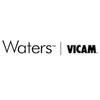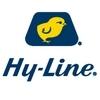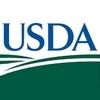Check out what is new in Poultry Industry
Find the best technical articles, forums, and videos on Poultry Industry at Engormix. Enter now and interact with the world's largest agricultural social network.
Supplementing poultry diets with xylanase partially depolymerizes the xylans present in the dietary cereals, reducing the number of sugars in the molecular chains. The resulting oligosaccharides can be selectively fermented by beneficial intestinal bacteria, resulting in improved nutrient utilization (De Maesschalck et al., 2015). The study aim was to investigate the production of xylo-oligosaccharides (XOS) in different batches of Australian wheat, in the presence or absence of xylanase....
Comments : 1
Recommendations: 0
I. INTRODUCTION As we learn more about the negative impacts of calcium (Ca) on the availability of phosphorus (P) in broiler diets, it highlights how little we know about Ca requirements, digestibility of Ca in ingredients and optimal Ca to P ratios. The interactions through which Ca exerts some of its negative effects can be direct or through chelation’s with phytate and the latter having a profound impact on the efficacy of phytase and on P digestibility....
Comments : 1
Recommendations: 3
I. INTRODUCTION Antibiotics as growth promoters (AGPs) have been extensively used at sub-therapeutic levels in poultry production to prevent diseases and promote growth performance. However, the persistent use of antibiotics can increase antibiotic-resistant bacteria and antibiotic residue accumulation in the animal products as well as potentially transferring resistant strains to humans through the food chain (Jazi et al., 2018a). Consequently, the poultry industry has been...
Comments : 0
Recommendations: 0
Supplemental xylanase may be used in diet formulation to reduce diet cost, mitigate the antinutritive effects of arabinoxylans, increase energy utilization, and improve growth performance of broilers. Xylanase has been shown to partially depolymerize arabinoxylans, which can reduce intestinal viscosity, reduce nutrient encapsulation, and modulate the intestinal microflora of broilers (Choct et al., 1999; Bedford, 1995; Bedford and Cowieson, 2012). In addition, products of xylanase...
Comments : 1
Recommendations: 0
Accurate estimation of the broiler’s lysine (Lys) requirement is vital because it is the second limiting amino acid (AA) in poultry diets and, when the ideal protein ratio concept is applied, the essential amino acids (EAA) are expressed as ratios to Lys. It is necessary to regularly update AA requirements for modern broiler chickens in order to accommodate their genetic progress. However, defining a nutrient requirement is difficult because of variations in age and sex of animals and...
Comments : 0
Recommendations: 0
INTRODUCTION
Campylobacter is a leading cause of human gastroenteritis in the United States and worldwide (Corcionivoschi et al., 2012; Sibanda et al., 2018). In the United States alone, the Centers for Disease Controls and Prevention (CDC) estimates an annual 1.3 million cases occurring per year (Centers for Disease Control and Prevention [CDC], 2018). From 1999 to 2008, Campylobacter was estimated to cause an annual 8,463 hospitalizations and 76 deaths in the...
Comments : 0
Recommendations: 0


Antibacterial activity of Bacillus species-derived surfactin on Brachyspira hyodysenteriae and Clostridium perfringens (Extract)
Suggested link
From 2Q onwards, the chemical industry upward trend was verified as a set one. Prices of more than 40 critical chemical raw materials showed an increase. At that time, there were also some raw materials with market prices falling. As of May 20, the market for...
Comments : 0
Recommendations: 4
Necrotic enteritis (NE) is one of the most important diseases of the world broiler industry which costs over six billion dollars annually. There has been a concerted effort to control and minimise the effects of NE that have arisen since the EU ban of in-feed antibiotics in the poultry industry. Organic acids have been used as alternatives to in-feed antibiotics for maintaining good gut health of poultry by suppressing the growth of pathogenic bacteria, resulting in improved performance...
Comments : 0
Recommendations: 1


Supplemental Bacillus subtilis DSM 32315 modulates intestinal structure, microbial composition and improve the performance in broiler chickens
Suggested link
INTRODUCTION Genetic selection programs emphasizing broiler growth, breast muscle deposition, and feed efficiency traits over the past 30 yr have led to a rate of change that has not slowed (Havenstein et al., 2003a,b). Photostimulation ( PS ) age, feed allocation, and BW profile of the maturing pullet can all effect nutrient partitioning between growth and ovary development (Robinson et al., 2007). Renema et al. (2007b) reported that, as a percentage of BW, Ross 708...
Comments : 0
Recommendations: 0
Featured comment:
Aurora Nutrition
George Entz
In order to use betaine hydrochloride with a matrix approach for poultry, and based on trials conducted in Thailand and other locations under what would be considered heat-stressed conditions, an inclusion of 2.5 kg/t (0.25%) would be required. Betaine's matrix value for digestible methionine and digestible methionine+cysteine is 42%, and 26,000 Kcal/kg. At 2.5 kg/t, supplemental choline chloride could generally be removed from the feed....
Comments : 91
Recommendations: 9
1. Introduction As reported by the World Health Organization (WHO), salmonellosis is taking third place among foodborne diseases in humans, causing death. In European Union, Salmonella Infantis has been ranked among five most prevalent infection-causing serovars in humans [1]. Unlike S. Enteritidis, S. Infantis serovar tends to develop multidrug resistant phenotype more often. It has been recognized as a persistent clone,...
Comments : 0
Recommendations: 0
Introduction The challenge of the contemporary production of agricultural products is intrinsically linked to optimizing processes and production costs. Ensuring thermal comfort, considering that the intense incidence of solar radiation and the high temperatures observed practically throughout the year in the Brazilian semiarid region can cause stress, causing the animals to decline in production, can increase animal production (Leitão et al., 2013). Therefore,...
Comments : 0
Recommendations: 1


Prices Hold, Pressures Build: What’s Moving the Veterinary API Market
Suggested link
1 Introduction Amino acids (AAs) are the building blocks of protein, which is the major dry matter component of growth in chickens and their eggs (Baker 2009). As foods for humans, poultry and eggs provide high-quality protein that contains sufficient amounts and proper ratios of AAs, therefore playing an important role in the growth, development, and health of humans (McNeill et al. 2017; Réhault-Godbert et al. 2019). Chicken or poultry byproducts are also low-cost...
Comments : 0
Recommendations: 2
Feed contributes about 70% of total expenses required for the modern poultry enterprises in general. As the days go by, the issue is becoming a cause of concern and it becomes almost mandatory to rethink on the feeding strategies to make the enterprises profitable & sustainable as well. Since the major reason for the concern is the rise in prices of various feedstuffs thus as a consequence practice to utilize comparatively cheaper and unconventional feed ingredients becomes time...
Comments : 4
Recommendations: 3
INTRODUCTION It is important to estimate precisely the energy value of feedstuffs and diets, either for least-cost formulation or for adapting feed supply to the metabolizable energy requirements of broilers. Unfortunately, such energy is not used with 100% of efficiency for production, because during metabolism, around 15% of the energy is wasted as heat, and this is commonly referred to as heat increment or specific dynamic action. In fact, net energy values vary with bird...
Comments : 2
Recommendations: 1
Rapidly growing birds may consume up to twice as much water as feed (Scantling and Watkins 2013), which means a plentiful supply of clean water is crucial for poultry health and productivity. To determine the quality of your poultry’s water resources,...
Comments : 3
Recommendations: 1
Introduction Mycotoxins are a large group of toxins produced by moulds and they can be very toxic for animals, plants and humans. Mycotoxins occur particularly in regions or countries with climates of high temperature and humidity or where there are poor crop harvesting and storage conditions, which encourage mould growth and mycotoxin development (25). The toxic effects of mycotoxins are mainly on liver and they cause teratogenic, mutagenic,...
Comments : 0
Recommendations: 0
DESCRIPTION OF PROBLEM Quail egg production is an important market for human consumption in some countries, including Brazil, China, and Japan. Studies are very important to enable a rational production for information on setting a correct feeding program for these birds. The level of a single essential amino acid that is either deficient or in excess may result in a diet that does not optimize the economic efficiency of a...
Comments : 1
Recommendations: 0
INTRODUCTION Cool temperature storage of eggs prior to incubation is a frequent practice of commercial broiler hatcheries. However, continued storage beyond 7 d leads to an increase in early embryonic mortality. The cellular and molecular mechanisms responsible for early embryonic mortality associated with egg storage and means to reduce such mortality has been addressed by several investigators (Fasenko, 2007; Hamidu et al., 2011; Dymond et al., 2013)....
Comments : 0
Recommendations: 0
1. Introduction Contamination with Salmonella affects an estimate of 20% of poultry meat [1]. This pathogen has the ability to remain viable for considerable periods of time in various biological and nonbiological habitats due to the formation of biofilms. Salmonella spp. are widely represented in the environment, and the intestinal tract of animals and birds is where they are found most [2,3]. Salmonella enterica can cause severe zoonotic disease and is transmitted to humans...
Comments : 0
Recommendations: 0



















.jpg&w=3840&q=75)
















